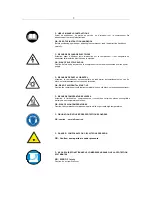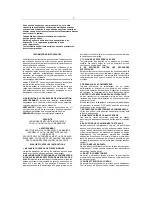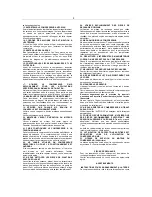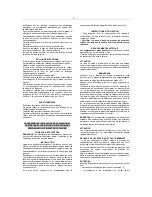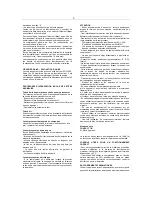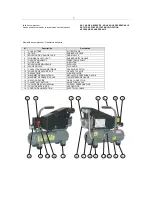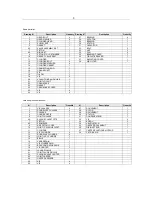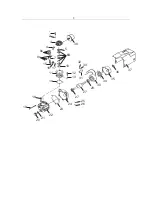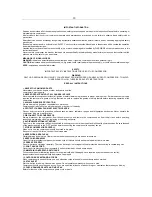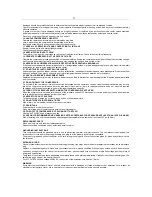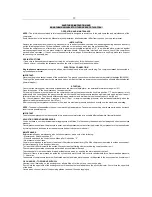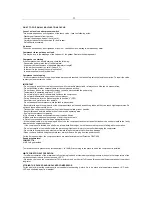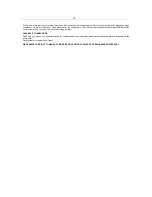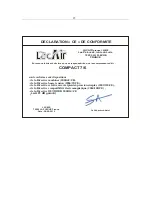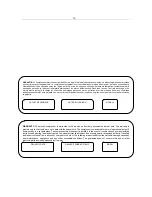
13
WHAT TO DO IF SMALL MALFUNCTIONS OCCUR
Loss of air in valve under pressure switch
This trouble depends on poor tightness of the check valve – take the following action:
- Discharge all pressure from the tank
- Unscrew the hexagon-head of the valve (A)
- Carefully clean both the rubber disk (B) and its seat.
- Refit all parts accurately.
Air losses
These can be caused by poor tightness of a union – check all unions, wetting them with soapy water.
Compressor turns but does not load
This may be due to the breakage of the valves or of the gasket. Replace the damaged part.
Compressor no starting
If the compressor has trouble starting, check the following:
- Does mains power match that of the data-plate?
- Are power cable extensions of adequate diameter or length?
- Is the work environment too cold? (Under 0°C)
- Is there oil in the housing to ensure lubrication?
- Is power supplied to the electrical line?
Compressor not stopping
- If the compressor does not stop when maximum pressure is reached, the tank safety valve comes into operation. To repair the valve,
contact your nearest service centre.
IMPORTANT
- Do not on any account unscrew any connection while the tank is pressurised – always check if the tank is pressure free,
- Do not drill holes, weld or purposely deform the compressed air tank,
- Do not do any jobs on the compressor unless you have disconnected the power plug,
- Temperature in operating ambient: 0°C +35°C,
- Do not aim jets of water or inflammable liquids on the compressor,
- Do not place inflammable objects near the compressor,
- During down-times, turn the pressure switch to position “0” (OFF),
- Never aim the air jet at people or animals,
- Do not transport the compressor while the tank is pressurised,
- Be careful with regard to some parts of the compressor such as the head and delivery tubes, as they can reach high temperatures. Do
not touch these parts to avoid burns.
- Transport the compressor, lifting or pulling it with the appropriate grips or handles.
- Keep children and animals well away from the machine operating area.
- If using the compressor for painting:
a) Do not work in closed environments or near to naked flames
b) Make sure there is adequate exchange of air at the place of work
c) Protect your nose and mouth with an appropriate mask.
- If the electrical cable or plug is damaged, do not use the compressor and contact an authorised service centre to replace the faulty
element with an original spare part.
- If the compressor is located on a shelf or on a top above floor height, it must be secured to prevent it falling while in operation.
- Do not put objects or your hands inside the protective grilles to avoid injury to yourself or damaging the compressor.
- Do not use the compressor as a blunt object toward things or animals, to avoid serious damage.
- When you have finished using the compressor, always remove the plug from the power socket.
For the European market, the compressor tanks are manufactured to meet Directive CE87/404
Sound pressure level
COMPACT7/6 :
91 dB LwA guaranteed
The level of acoustic pressure can increase from 1 to 10 dB(A) according to the place in which the compressor is installed.
HINTS FOR EFFICIENT OPERATION
- For efficient operation of the machine at full continuing load and at maximum operating pressure, make sure the temperature of the
work environment indoors does not 35°C,
- We advise you to use the compressor at 70% maximum duty per hour at full load as this ensures efficient operation of the product
long-term.
STORING THE PACKED AND UNPACKED COMPRESSOR
For the whole time that the compressor is not used before unpacking it, store it in a dry place at a temperature b0°C and +
35°C and sheltered away from weather.


